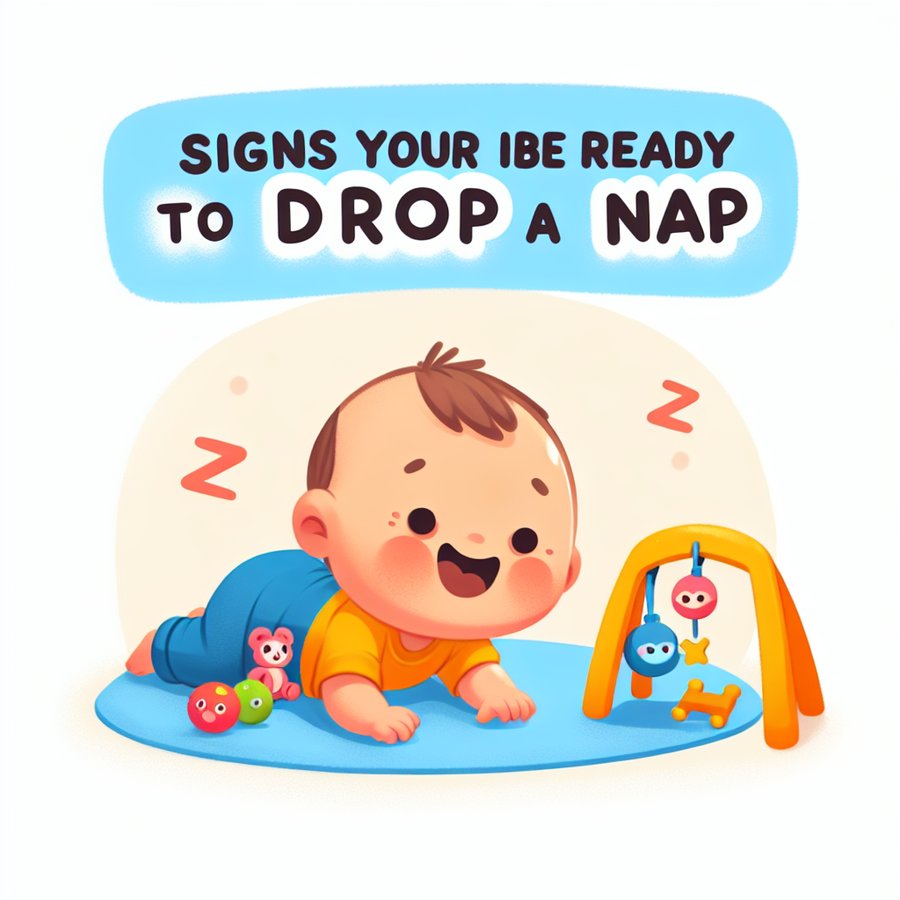One of the significant milestones in a baby’s first years includes changes in their sleeping patterns, particularly when it comes to dropping a nap. As a parent, recognizing the signs your baby is ready to drop a nap can help you adjust your little one’s sleep schedule to better meet their needs. But how do you know when the time is right? Let’s explore the indicators and strategies to ensure a smooth transition for both you and your baby.
Identifying the Signs Your Baby is Ready to Drop a Nap
Several signs may indicate your baby is ready to adjust their napping routine. These include a noticeable decrease in overall naptime, resistance to napping at previously established times, and changes in nighttime sleep quality. When your baby shows these signs, it might be time to consider adjusting their sleep schedule. It’s essential to observe your baby’s behavior and mood as these changes unfold to ensure they are adjusting well.
Another critical factor is age. Most babies are ready to drop a nap at certain developmental stages. For example, moving from two naps to one typically occurs around the age of 12 to 18 months. However, every child is unique, and some may be ready earlier or later than others. It’s important to pay close attention to your baby’s specific needs and patterns rather than adhering strictly to age-based guidelines.
How to Smoothly Transition Your Baby to Fewer Naps
Once you’ve identified the signs your baby is ready to drop a nap, the next step is to ensure a smooth transition. Start by gradually adjusting their sleep schedule. If your baby is moving from two naps to one, begin by slowly pushing the morning nap later each day until it merges with the afternoon nap time. This gentle shift helps your baby adjust without causing significant disruption to their overall sleep needs.
During this transition, it’s crucial to keep an eye on how your baby is coping. Look for signs of overtiredness, such as increased fussiness or difficulty falling asleep at night. If these issues arise, it may be necessary to offer some quiet time or a shorter nap to help them adjust. Remember, patience and flexibility are key during this period.
Supporting Your Baby’s Sleep Health During Nap Transitions
Maintaining a consistent sleep environment and routine plays a vital role in supporting your baby’s sleep health, especially during nap transitions. Ensure your baby’s sleep area is conducive to rest, with a comfortable temperature and minimal distractions. Additionally, establishing a soothing pre-nap routine can signal to your baby that it’s time to wind down, making it easier for them to fall asleep.
It’s also beneficial to educate yourself on various sleep-related topics to better support your child. For example, learning about how to establish a sleep schedule for a newborn, the role of REM sleep in infant development, and techniques for soothing a baby to sleep through the night can provide valuable insights for navigating this and future sleep transitions.
For more in-depth guidance, consider consulting external expert resources on baby sleep patterns and health. These can offer additional strategies and perspective on ensuring your baby receives the rest they need during this developmental phase.
In conclusion, understanding the signs your baby is ready to drop a nap is crucial for adapting their sleep schedule to support their growth and development. By observing your baby’s cues, gradually adjusting their routine, and maintaining a supportive sleep environment, you can help ensure a smooth transition for your little one. Remember, every baby is unique, so staying attuned to your child’s specific needs will guide you in making the best decisions for their sleep health.
For further information on baby sleep health, consider exploring articles on ideal room temperature for baby sleep in winter, safe co-sleeping practices for newborns, and benefits of daytime naps for infant sleep patterns within our comprehensive resource library.













